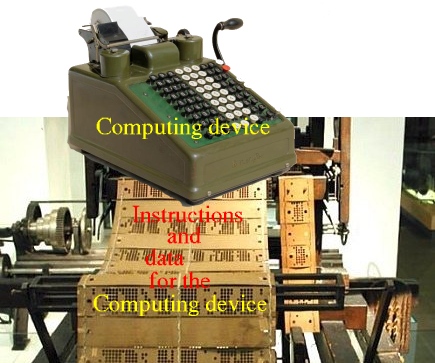Recall: mechanical representation of a computer

The Computer (= the CPU) can
execute
3 types of
instructions
The basic types of instructions that the CPU (= computer) can execute are:
|
Note: for brevity, from now on "register" means: general purpose register (unless stated otherwise) !
Reduced Instruction Set Computers
- (RISC)
|
Complex Instruction Set Computers
- (CISC)
|